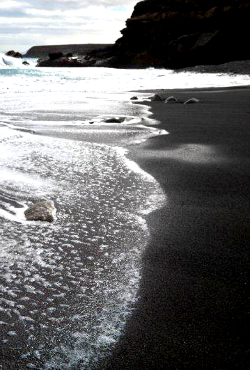Efforts to access iron in trans-Tasman seabed
 New Zealand firm TransTasman Resources is looking to break open offshore iron sands, seeking permission for marine mining off the southern coast.
New Zealand firm TransTasman Resources is looking to break open offshore iron sands, seeking permission for marine mining off the southern coast.
TransTasman’s plan would see the extraction of around 50 million tonnes of sediment per year, which would be processed on a system of floating refinery vessels.
Reports say 50 million tonnes of sediment would provide 5 million tonnes of iron ore concentrate for export.
The plan requires approval from the Environmental Protection Authority (EPA), whose hearing starts in Wellington today. If successful, the offshore operation would cover 65.76 square kilometres of seabed in an area known as the South Taranaki Bight.
The EPA received 4848 submissions ahead of this week’s talks.
The application will be the first to fall under the jurisdiction of a marine mining decision-making committee, appointed by the EPA under new legislation.
TransTasman, a 90 per cent foreign-owned entity, has already poured over $NZ48 million into environmental research for the new fields.
“We would say no other past marine project, other than perhaps investigations into the Maui gas fields in the 70s and 80s, has been researched as deeply,” TransTasman chairman Tim Crossley said.
He says the project would provide $NZ150 million worth jobs and taxes to the government each year.
The process for extracting iron from sandy seabeds involves a number of steps, all of which can be carried-out on the water.
Iron sand is vacuumed up and into a vessel to extract magnetite concentrate, before being pumped to a second vessel which uses fresh water to clean the product. Concentrate is then transferred to a third ship for transport.
The submarine crawler trundles along between 60 and 70 metres an hour, vacuuming in a ‘single pass’ process to extract sand and backfill the trench in the same motion.
TransTasman wants to be up and running of the southern NZ coast by the end of 2016, but will need a nod from five EPA commissioners overseeing the marine consent application.
Hearings will be held over two months.
Kiwis Against Seabed Mining (KASM) say if they can manage to knock this project down, it will set a precedent under the newly-imposed Exclusive Economic Zone (EEZ) legislation.
KASM says the EEZs are designed to make people see the ocean as just a new place to make money.
“It's a perspective they are asking people to take and what I am seeing is people are reluctant to accept that,” KASM chairman Phil McCabe says.
“This is a precedent-setting case and the whole coast is very concerned about the outcome of this first application.”
“Given the circumstances I think we have laid out a good challenge for a small community-based group... [but] we're grossly underfunded. We weren't eligible for any environmental legal aid . . . so we have had to fund ourselves,” he said.
TransTasman Resources chief executive Tim Crossley says the company intends to walk the line.
“We look forward to participating in a rigorous public hearing process . . . We strongly believe that the local and national benefits of our project significantly outweigh any perceived negative environmental effects,” he said.
“We are confident that TTR has put forward the best available information and we believe the EEZ Act and the EPA processes provide a robust framework for assessing the effects and merits of our project.”








 Print
Print